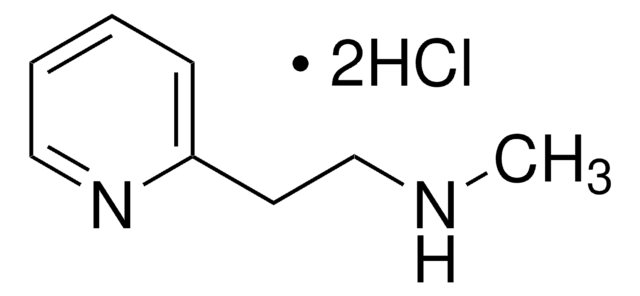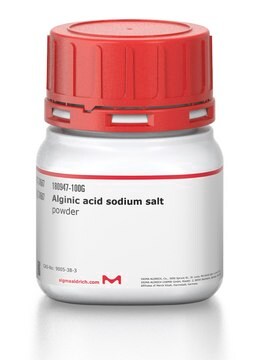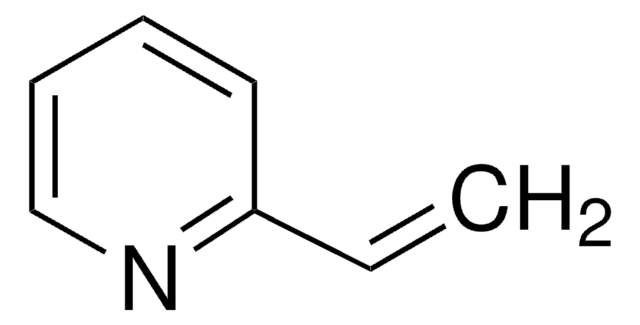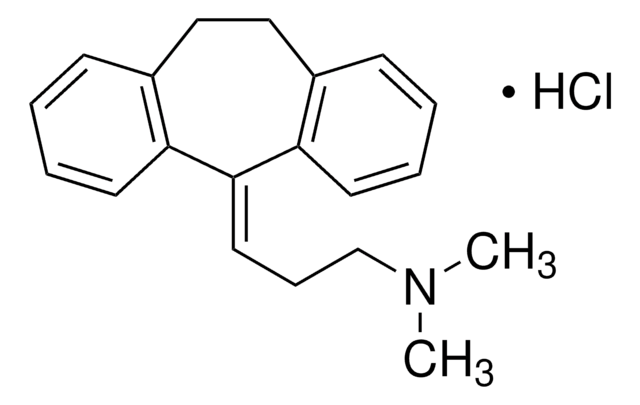B4638
Betahistine dihydrochloride
≥98%
Sinonimo/i:
Methyl[2-(2-pyridyl)ethyl]amine dihydrochloride
Autenticatiper visualizzare i prezzi riservati alla tua organizzazione & contrattuali
About This Item
Formula empirica (notazione di Hill):
C8H12N2 · 2HCl
Numero CAS:
Peso molecolare:
209.12
Numero CE:
Numero MDL:
Codice UNSPSC:
12352100
ID PubChem:
NACRES:
NA.22
Prodotti consigliati
Saggio
≥98%
Stato
powder
Stringa SMILE
Cl.CNCCc1ccccn1
InChI
1S/C8H12N2.2ClH/c1-9-7-5-8-4-2-3-6-10-8;;/h2-4,6,9H,5,7H2,1H3;2*1H
XVDFMHARQUBJRE-UHFFFAOYSA-N
Informazioni sul gene
human ... HRH1(3269) , HRH3(11255)
Cerchi prodotti simili? Visita Guida al confronto tra prodotti
Codice della classe di stoccaggio
11 - Combustible Solids
Classe di pericolosità dell'acqua (WGK)
WGK 3
Punto d’infiammabilità (°F)
Not applicable
Punto d’infiammabilità (°C)
Not applicable
Dispositivi di protezione individuale
Eyeshields, Gloves, type N95 (US)
Scegli una delle versioni più recenti:
Possiedi già questo prodotto?
I documenti relativi ai prodotti acquistati recentemente sono disponibili nell’Archivio dei documenti.
I clienti hanno visto anche
Enis Alpin Guneri et al.
Otolaryngology--head and neck surgery : official journal of American Academy of Otolaryngology-Head and Neck Surgery, 146(1), 104-108 (2011-08-20)
The purpose of this study is to evaluate the effects of betahistine in addition to Epley maneuver on the quality of life of patients with posterior semicircular canal benign paroxysmal positional vertigo (BPPV) of the canalithiasis type. Double-blind, randomized, controlled
Burkhard Franz et al.
Acta oto-laryngologica, 131(11), 1155-1159 (2011-09-13)
Betahistine dihydrochloride, a drug used widely in the systemic treatment of balance disorders such as Ménière's disease, was found to improve eustachian tube function when applied topically in the nasopharynx of rats. The study tested the effect of betahistine, a
T Y Kew et al.
The Journal of laryngology and otology, 126(1), 66-71 (2011-08-27)
We report an extremely rare case of duplication of the internal auditory canal associated with dysfunction of both the facial and vestibulocochlear nerves. We also review the literature regarding the integrity of the facial and vestibulocochlear nerves in such cases.
Maurício Malavasi Ganança et al.
Brazilian journal of otorhinolaryngology, 77(4), 499-503 (2011-08-24)
Betahistine is a medicine used to treat vestibular disorders that has also been used to treat tinnitus. To assess the effects of betahistine on tinnitus in patients with vestibular disorders. Retrospective data were collected from patient records for individuals presenting
Fritz Ihler et al.
PloS one, 7(6), e39086-e39086 (2012-06-30)
Betahistine is a histamine H(1)-receptor agonist and H(3)-receptor antagonist that is administered to treat Menière's disease. Despite widespread use, its pharmacological mode of action has not been entirely elucidated. This study investigated the effect of betahistine on guinea pigs at
Il team dei nostri ricercatori vanta grande esperienza in tutte le aree della ricerca quali Life Science, scienza dei materiali, sintesi chimica, cromatografia, discipline analitiche, ecc..
Contatta l'Assistenza Tecnica.







